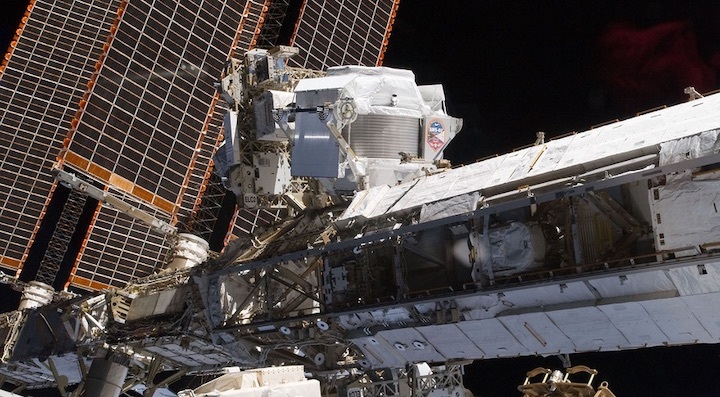13.11.2019

WASHINGTON — Two astronauts are set to begin a series of spacewalks this week to repair an instrument outside the International Space Station that was never designed to be serviced in orbit.
At a pair of Nov. 12 press conferences, officials said that NASA astronaut Andrew Morgan and European Space Agency astronaut Luca Parmitano are ready for a Nov. 15 spacewalk to start work to replace the cooling system on the Alpha Magnetic Spectrometer (AMS) instrument mounted on the station’s truss.
That spacewalk will be the first of four currently planned to install a new cooling system for the instrument, which has been on the station since 2011. Three of the four pumps in that cooling system have failed and the fourth would likely fail within months without repairs.
The AMS, which detects and measures the energy of cosmic rays, was never designed to be serviced once installed on the station. That makes preparations for the spacewalks to repair the instrument’s cooling system particularly challenging.
“When we first started this, we weren’t really sure if we were going to be able to complete the repairs successfully,” Tara Jochim, AMS spacewalk repair project manager at NASA’s Johnson Space Center, said during one briefing of the four-year planning effort for the repairs. “Usually when you go out for a spacewalk, you’re working on a piece of hardware that was prepared for, on the ground, for a spacewalk.”
The repair effort required the development of special tools to gain access to the instrument and its cooling system while minimizing the creation of debris or sharp edges that could put the spacewalkers at risk. Morgan and Parmitano trained extensively on those tools and techniques prior to flying to the ISS, and have access to extensive training videos and video conferencing with experts on the ground in preparation for the spacewalks, said Jeff Radigan, spacewalk flight director.
The first spacewalk, on Nov. 15, will largely be used to set up the worksite for the repairs, including removing a debris cover to gain access to the instrument. That debris cover will literally be tossed away from the station during the spacewalk, since it is too large to bring back insider the station or otherwise secure outside the station. “If we get through the removal of the debris shield, it will be a good, successful first EVA,” said John Mularski, lead spacewalk officer.
By the end of the second spacewalk, scheduled for Nov. 22, astronauts should be cutting into tubes in the cooling system to prepare for the installation of the new pump on the later spacewalks. The exact schedule of those spacewalks, though, will depend in part on the progress made on the first two, as well as other station activities.
“We’re staying a little bit fluid. We want to see how these first couple of EVAs go, along with some of the other science and research projects,” said Kenny Todd, NASA’s ISS operations integration manager. That third spacewalk is tentatively set for Dec. 1 or 2, but he gave no date for the fourth, and currently final, spacewalk in the series.
Complicating those plans is the scheduled arrival of a SpaceX Dragon cargo spacecraft on Dec. 7 with time-sensitive experiments on board, as well as the launch later in December of a Boeing CST-100 Starliner commercial crew vehicle on an uncrewed test flight. “In that timeframe it will be pretty much impossible for us to do any additional AMS EVAs,” he said, “which is part of the reason we’re trying to see how many we can get done before the Dragon gets there.”
If the repairs are successful, the AMS should be able to operate through 2030. The international consortium that operates the instrument, led by Sam Ting of the Massachusetts Institute of Technology, a Nobel laureate in physics, believes that such an extension will allow them to gain new insights on topics ranging from the nature of dark matter to an unexpected variation in low energy cosmic rays on an annual cycle.
At a Nov. 1 briefing at NASA’s Wallops Flight Facility the day before the launch of a Cygnus cargo spacecraft that brought AMS repair equipment to the station, Ting argued that keeping the AMS going for the rest of the station’s lifetime would provide data that might upend astrophysical theories.
“AMS will continue to collect and analyze data for the lifetime of the space station, because whenever precision instruments such as AMS are used to explore the unknown, new and exciting discoveries can be expected,” he said.
Quelle: SN
